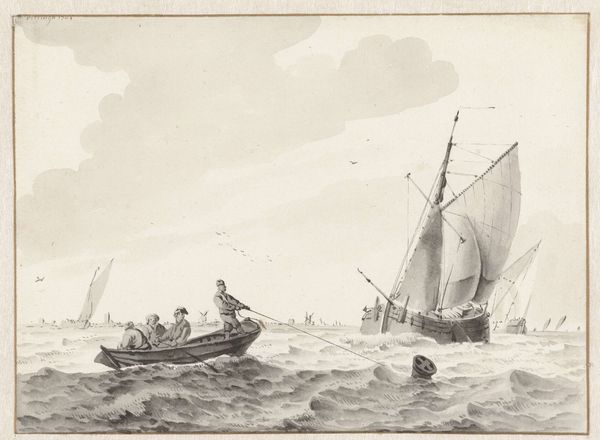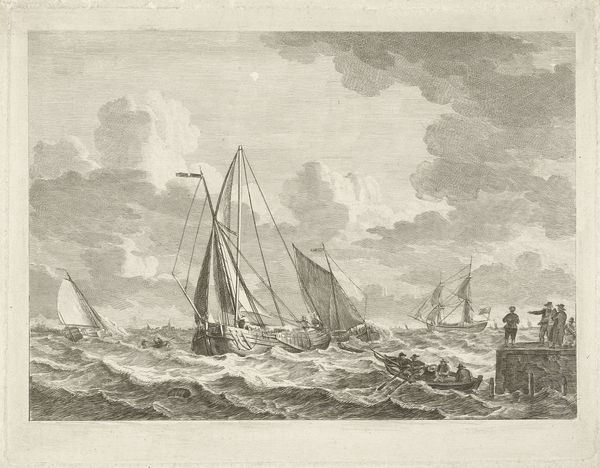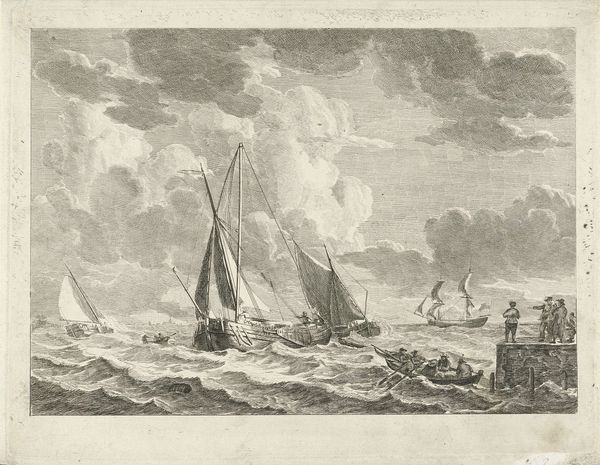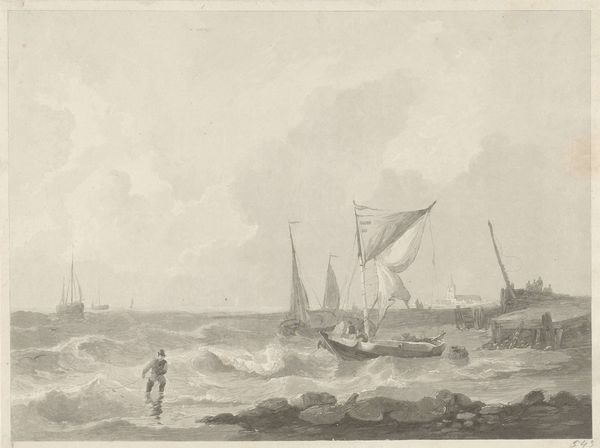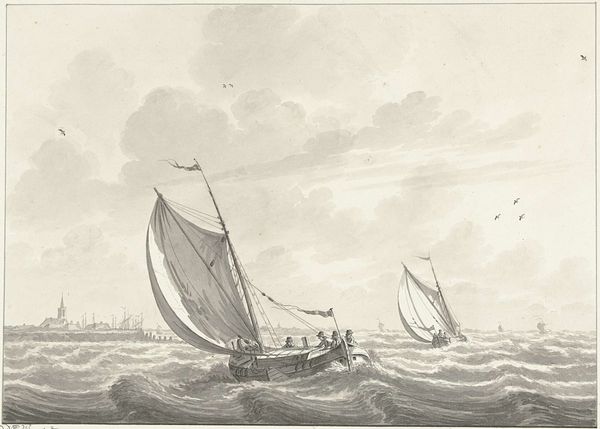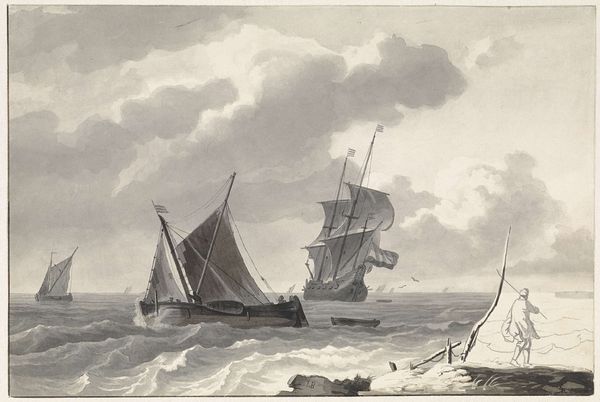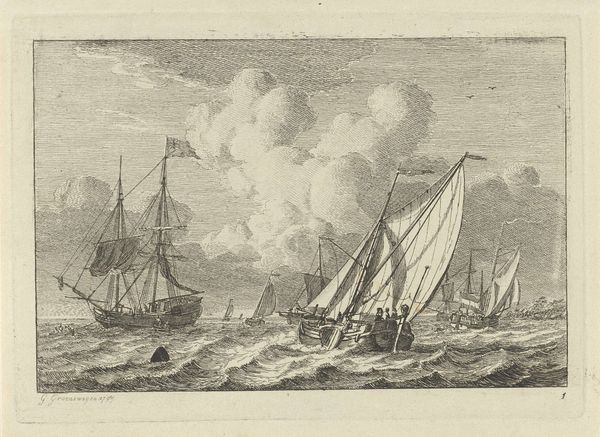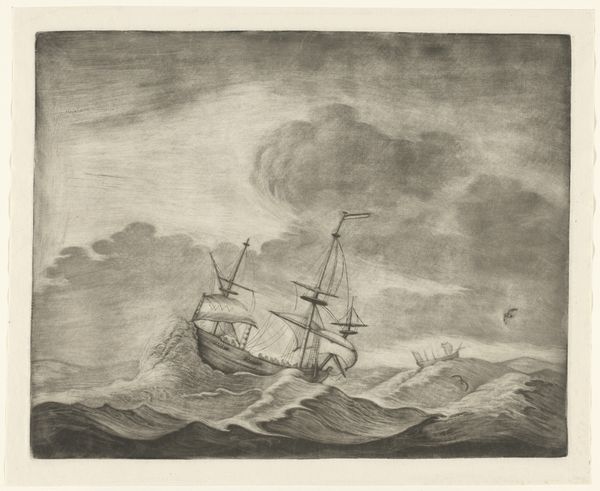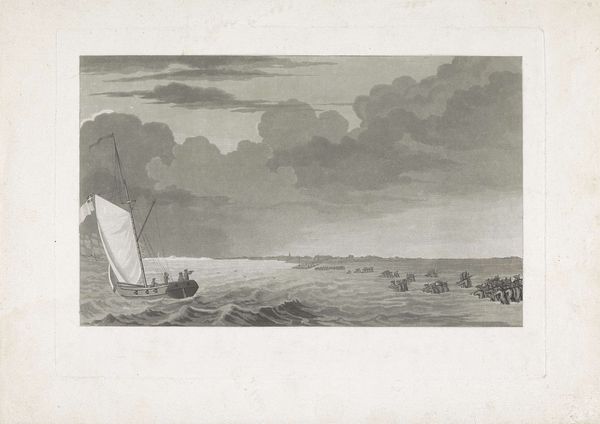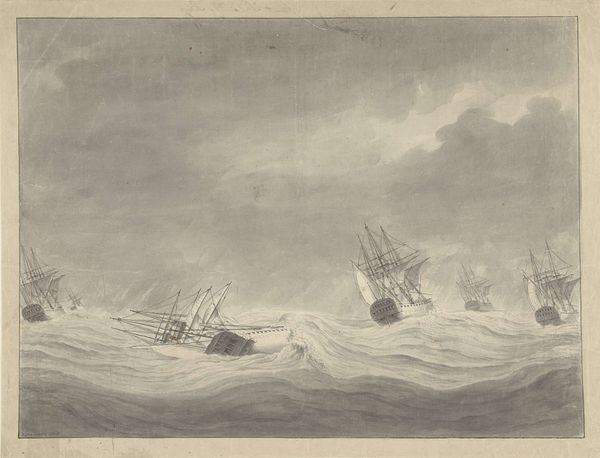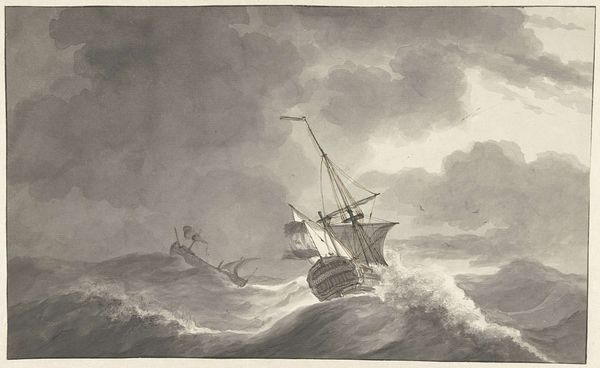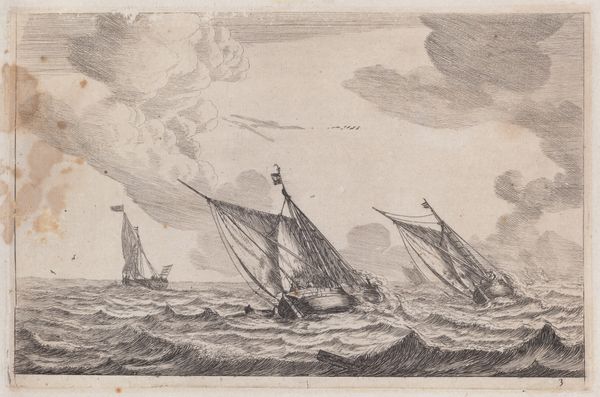
drawing, print, paper, ink, engraving
#
drawing
#
narrative-art
# print
#
landscape
#
paper
#
ink
#
romanticism
#
19th century
#
engraving
#
realism
Dimensions: height 195 mm, width 263 mm
Copyright: Rijks Museum: Open Domain
Curator: We’re now looking at “Stijgerboot,” a print dating from between 1822 and 1845, currently held here at the Rijksmuseum. Editor: It feels very dynamic! The waves are quite dramatic, and you get a real sense of movement. It feels like the boat is battling against the elements. Curator: Absolutely. Created anonymously with ink and engraving on paper, this piece offers a window into maritime life, and perhaps anxieties of the period. The ‘Stijgerboot’, literally 'Climbing Boat', is filled with figures, cutting through a rough sea under a turbulent sky. Consider the political and social role of maritime commerce at that moment, and how it represented freedom, expansion and control. Editor: It's interesting how the artist has chosen to depict this vessel mid-journey with a sky looming with such palpable uncertainty. Do you read any sense of romanticism in this at all? I notice the suggestion of realism. It evokes feelings of both vulnerability and human endeavor. Is that smaller boat in the background a threat or salvation? Curator: Well, thinking of representation and agency in similar nautical scenes of that era, particularly the romantic style you referenced, one sees the human figure romanticized against the natural elements as a testament to man's abilities, especially against a larger force of nature. Looking here, the figures are present, but aren't clearly defined; their identity obscured and almost blending in with the boat's structure itself. They are subject to the power that dominates them. I suppose then, depending on the viewer's particular social milieu, both ships could appear menacing or benign. Editor: That really helps bring into focus that this seemingly straightforward depiction of boats and figures at sea is a complex portrait. The narrative is so tied to themes like control, nature, identity, and perhaps a questioning of societal structures, it encourages one to rethink this quiet artwork. Curator: I completely agree. And placing this within a socio-political context, its ambiguity becomes an invitation to unpack contemporary understandings of mobility, and national anxieties around control, even today. Editor: Thanks for the deeper insight into this artwork; I'm leaving with an unexpected appreciation of the subtle political narrative contained within.
Comments
No comments
Be the first to comment and join the conversation on the ultimate creative platform.
